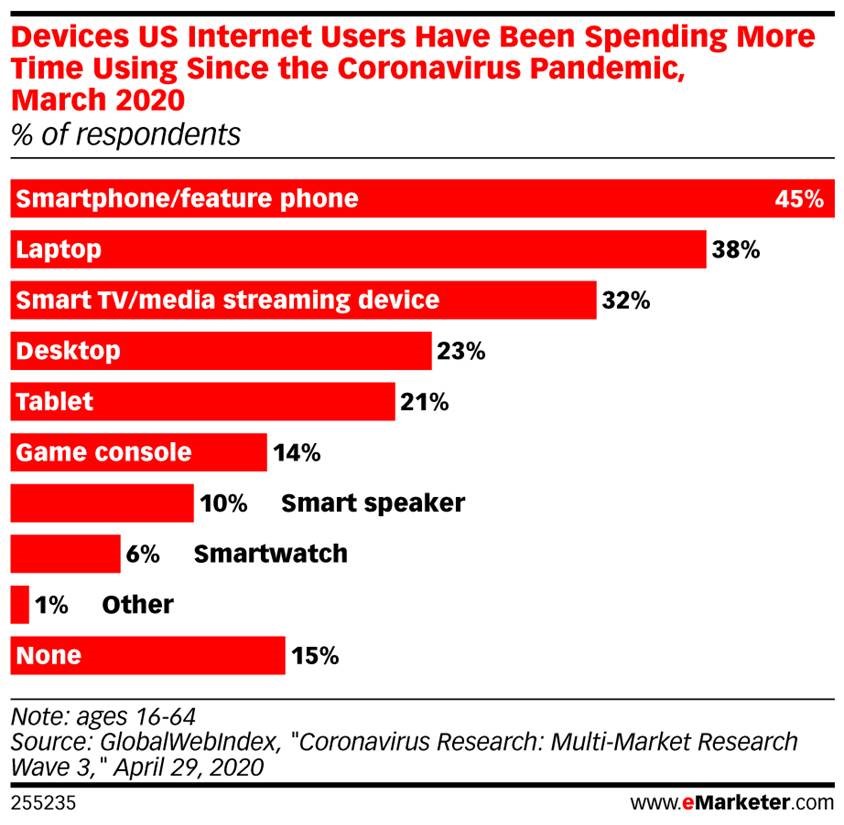Marketing in Times of Crisis
The way brands communicate with consumers during times of crisis can have a lasting impact on the future health of their business. Brands that can quickly adapt and evolve will be successful when business returns to normal. Even with a solid end-to-end marketing plan, it’s important to review branding strategies to align them with changing consumer needs.
The campaign must go on
Historically, during an unprecedented crisis, brands tend to underestimate the urgency, scale, and breadth needed in their response. Businesses fearful of declining revenue begin to turn the dial down in various areas, including their ad spending. While it’s tempting to do so, there have been a number of studies going back nearly one century that point out the advantages of maintaining or even increasing ad budgets during a weaker economy. Advertisers that maintained or grew their ad spend increased sales and market share during the recession and afterwards. According to BCG, “competitive volatility increases during downturns (for example, the rate at which businesses jump into or fall out of the Fortune 100 each year rises by 50%), reflecting an opportunity to use the downturn to your competitive advantage”. A suspension of advertising for more than six months can have deleterious effects on brand health. Marketers that focus on a long-term view on their media strategy will be well positioned down the line.
Consumers want to hear from brands when times get tough. They see it as something normal, a welcome distraction and a reminder that life goes on. Research from Kantar shows 92% of consumers believe brands should continue communicating during the COVID-19 pandemic. Hence the popular adage, “When times are good you should advertise. When times are bad you must advertise."
Understand your audience & the tone of your message
While most brands know who their customers are through built out personas and demographics, understanding the impact of a crisis on your target audience is completely different. Rethink your data-driven strategy by removing math from the equation and adding a sensitive, human layer to your marketing outreach. Consider how a specific sales message or call to action could affect your audience given the backdrop of a crisis. Your customers are listening closely, and your brand’s tone speaks volumes.
We recommend swapping keywords and persona data for helpful, informative and supportive messaging, otherwise the impact of your brand’s message could feel tone-deaf or opportunistic. The goal is to strike a balance between staying top-of-mind without appearing to capitalize on a terrible situation. We don’t recommend focusing ad spend on lower funnel tactics at scale during a crisis; instead diversify your channels and deliver a message that your brand will be there, when people are ready. A strategy used by marketers, for example, is using short-term price incentives to match the economic climate with consumers who are seeking a good deal. Another strategy is to point out the value that your brand provides during tough times. The crisis is temporary but messaging that reaches your audience on a personal level and instills trust, is long lasting.
Don’t reinvent the wheel
Changing your messaging strategy doesn’t mean you have to throw everything out the window and start from scratch. Crafting new ads from existing footage to ensure cultural relevance can prove to be both cost effective and time efficient. The visual aspect of brand image and messaging can be more influential than you might imagine. In the case of COVID-19, we recommended avoiding imagery surrounding travel, social gatherings, and other activities that may be on hold. Instead we suggest brands focus on the hard work of their employees to keep customers safe and prioritize emotional appeals. Apply principles of color psychology and cyberpsychology to create visual user experiences that help eliminate the audience’s negative emotions and set a more positive mood. Adapt and reimagine what you already have in your marketing toolbox to tell new, timely stories. Maya Angelou wisely said, “At the end of the day people won't remember what you said or did, they will remember how you made them feel.”
Be genuine to stay relevant
In times of uncertainty, consumers are looking to brands they trust to provide informative, helpful and honest information. Sharing falsehoods in order to drum up sales can be detrimental to your brand. By being an authentic, trustworthy source to your customers, you will grow their loyalty to you. It will help you improve a brand reputation, increase customer retention, and convert more sales.
“Ask yourself, how will your brand show up. In times of crisis, you need to know what your brand stands for and how that applies to the current situation. What do your customers need, and how can you meet them where they are in the most authentic way,” recommends Causal IQ’s Director of Sales Planning, Shana Atwood.
Don’t focus on one channel or device
Deliver consistent interactions with clients in order to build loyalty and strengthen relationships. But, it’s also important to consider device usage. The blurring of home and workspaces has allowed us to identify new strategies for prompting consumer engagement. Consider diversifying advertising efforts to reach consumers throughout the day whether they are on mobile phones, connected TV’s, laptops and tablets. The eMarketer chart below shows how device usage has changed since the coronavirus pandemic took hold in the US in early March.

Keep in mind not all outreach mediums are created equal. It is reasonable to believe television consumption is on the rise when your customer is safe at home during a crisis. While that may be true, people interact with digital media in different ways during a crisis, and marketers must be cognizant of changing behaviors, and of habits that may be here to stay.
